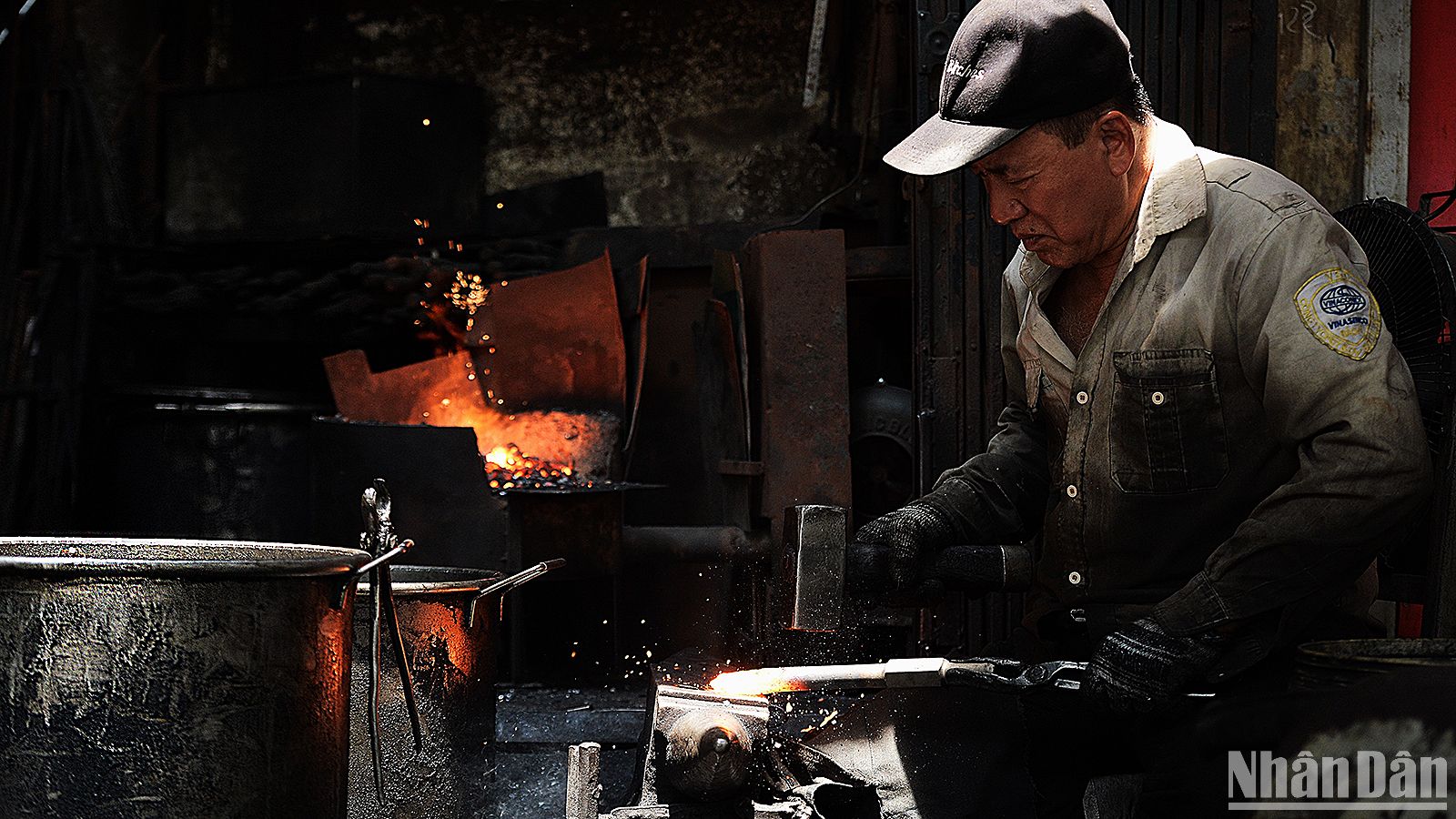
Mr. Nguyen Phuong Hung, also known to many as "Hung Lo Ren" works hard every day to preserve the traditional profession.
Hanoi 36 streets are often known for their small, interwoven streets, associated with many handicrafts that have become typical cultural features such as: Hang Bong, Hang Bac, Hang Vai, Thuoc Bac... Among them, Lo Ren is a street famous for products serving increased production such as plows, hoes, shovels, knives, scissors.
In the memory of Mr. Nguyen Phuong Hung, also known to many people by the name "Hung the blacksmith", a few decades ago, the furnaces on this small street were always red with fire, and from a few dozen meters away, one could easily hear the sharp, hurried sound of hammers and the bustling sounds of talking, laughing, and trading.
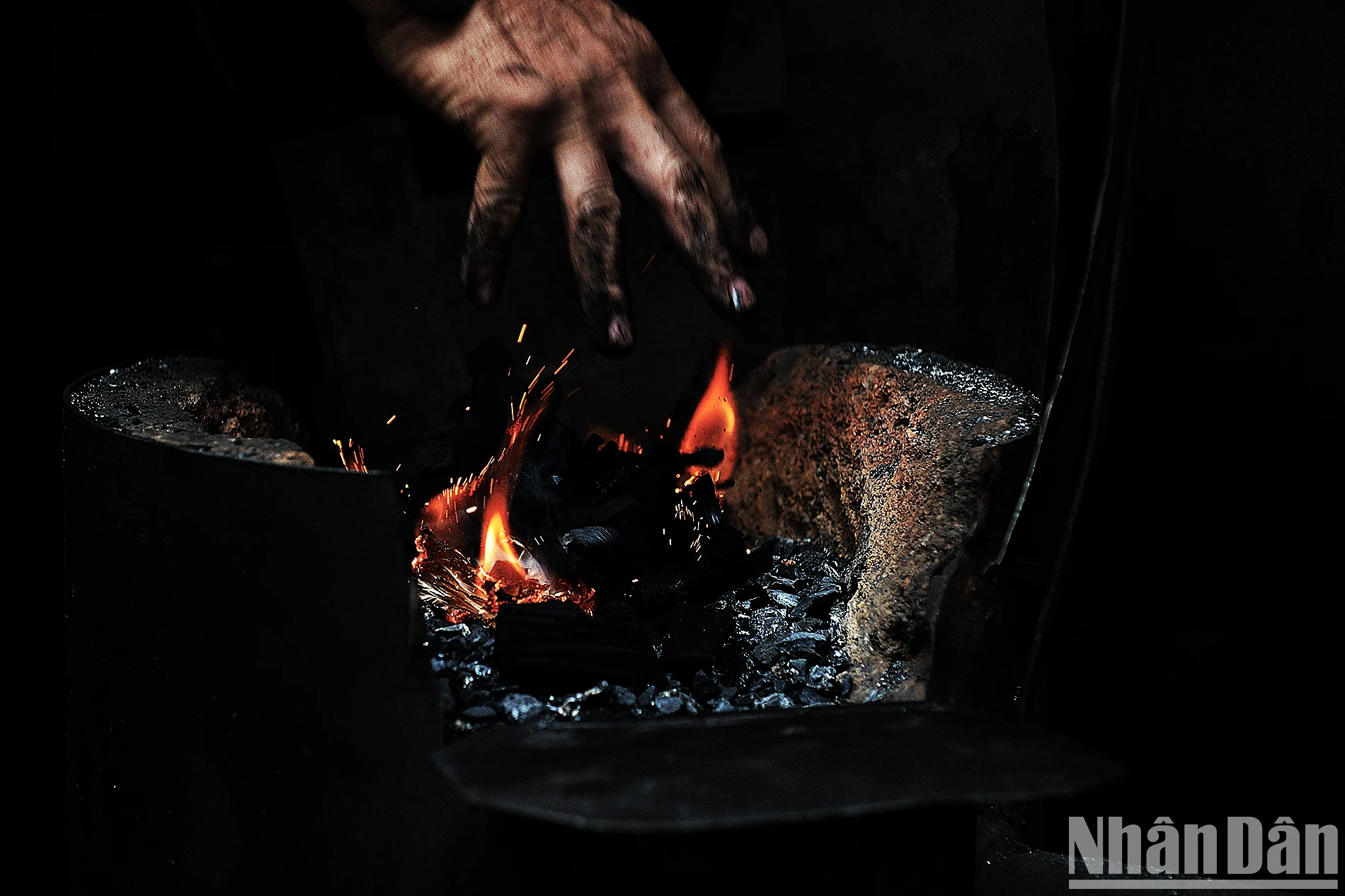 |
Mr. Hung lights the fire in his handmade furnace at the corner of Lo Ren - Hang Dong street.
Like other children at that time, from the age of 10, Mr. Hung had to help his father collect coal, light the fire, and prepare tools. However, few people know that the boy Nguyen Phuong Hung used to hate the blacksmithing profession of his grandfather and father "because it was hot, gave him headaches, and he was always sweaty, covered in soot and metal dust".
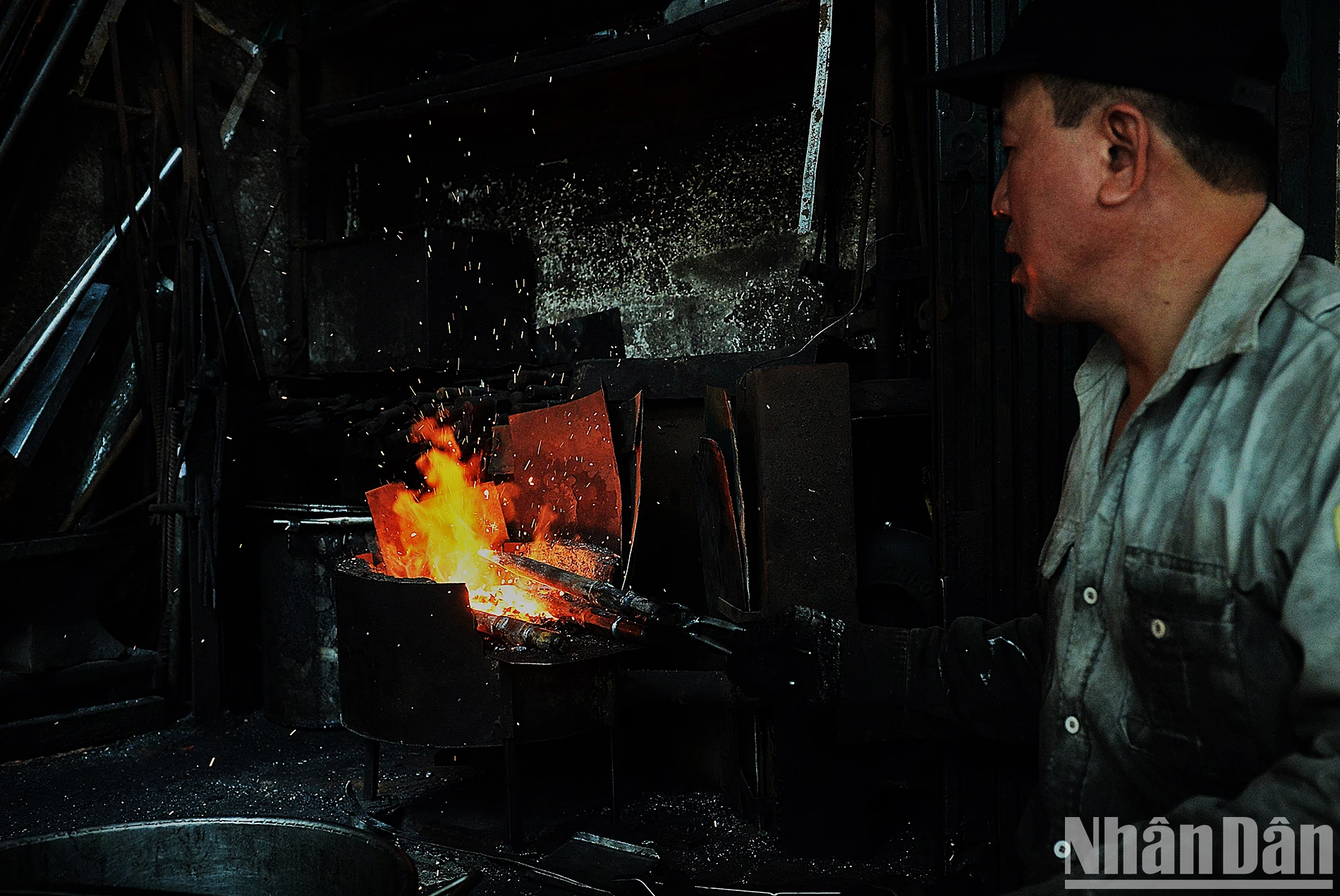 |
Mr. Hung's most common job is repairing and renewing drill bits and chisels for construction machines.
That is why, after graduating from high school, the young man Nguyen Phuong Hung decided to study mechanical engineering and then work in an auto repair shop. Mr. Hung's life would have been tied to auto parts production, if before his death, his father had not called his children and instructed: "Only Hung can continue the family business".
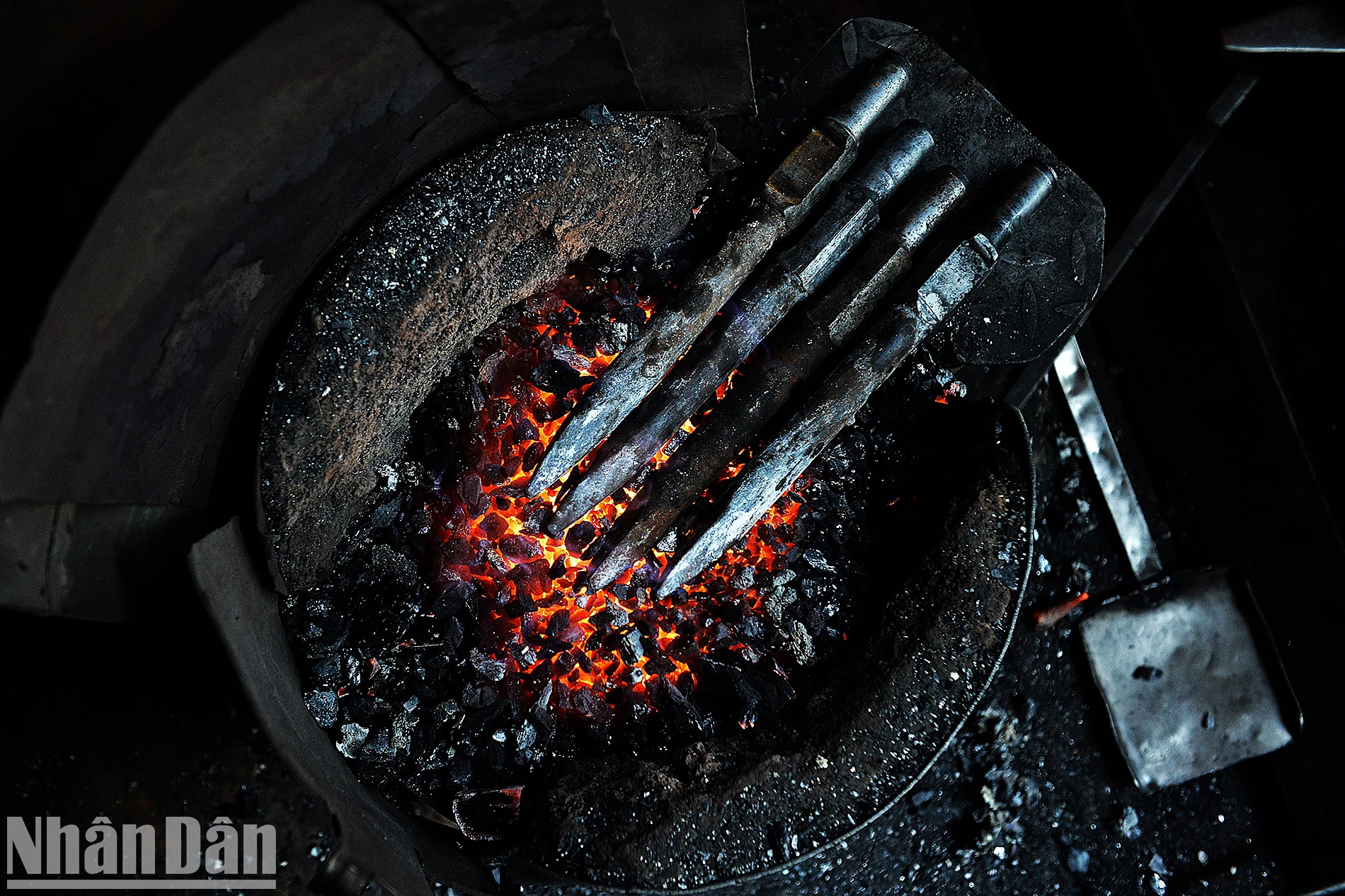 |
The traditional forge bellows are red hot to welcome new "projects".
At that moment, Mr. Hung suddenly woke up. He realized that, with that same forge, his father had raised 7 children to be educated and become decent people. He officially took over the "business" his father left behind, becoming the third generation artisan to keep the fire of his ancestors' forge.
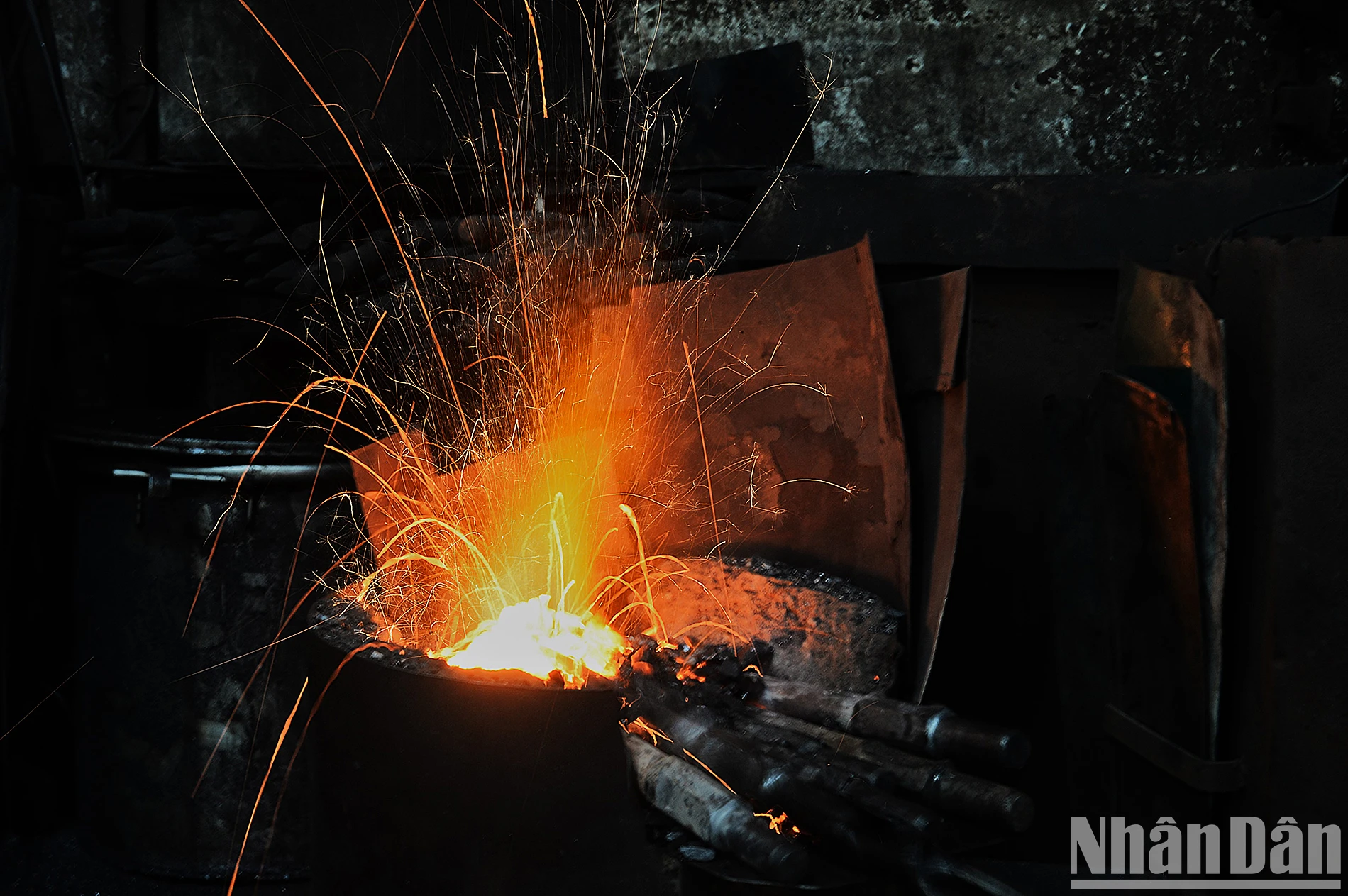 |
The "fire flowers" crackle, signaling when the raw material is ready for processing.
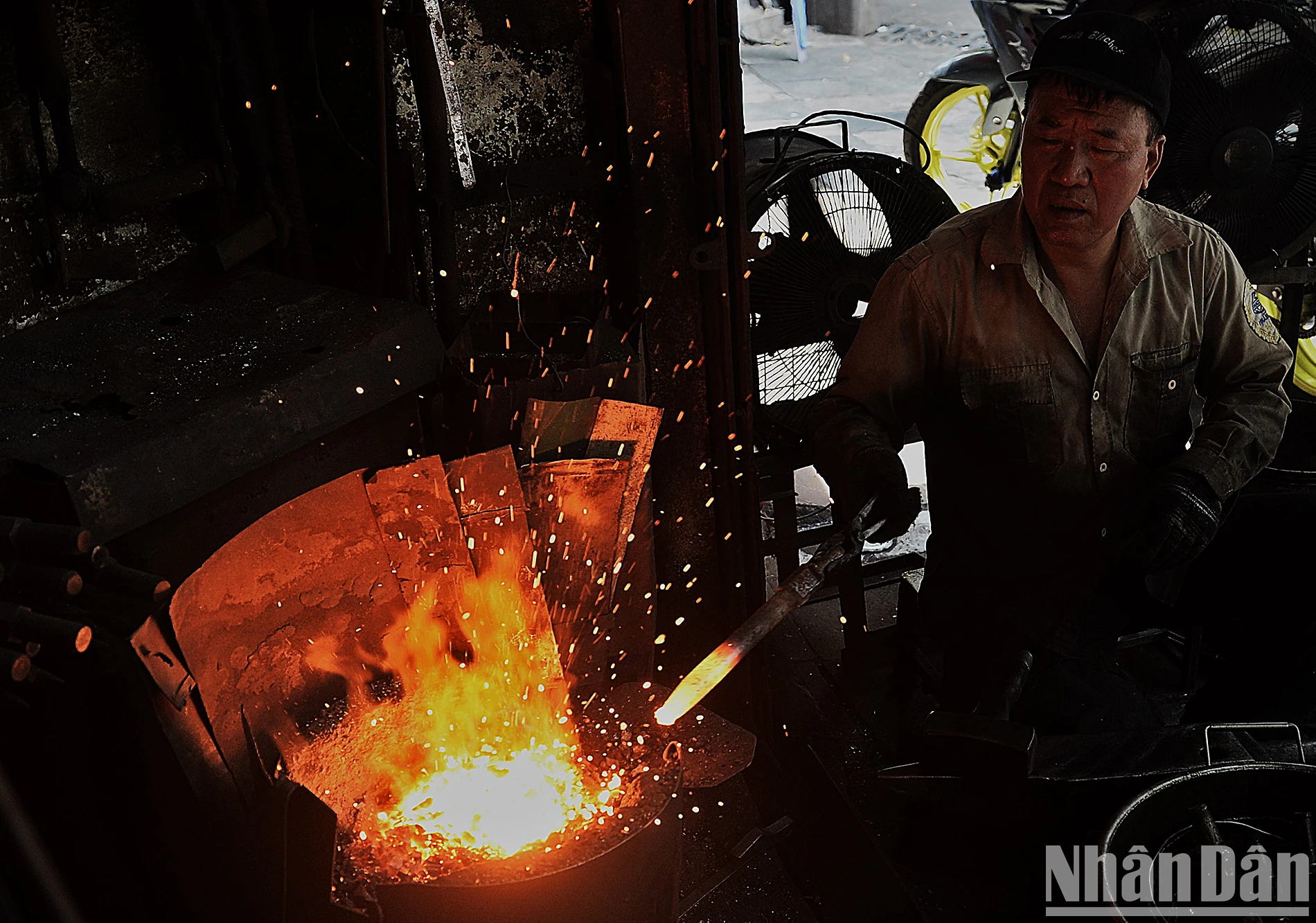 |
At this time, Mr. Hung will take the raw materials out of the oven.
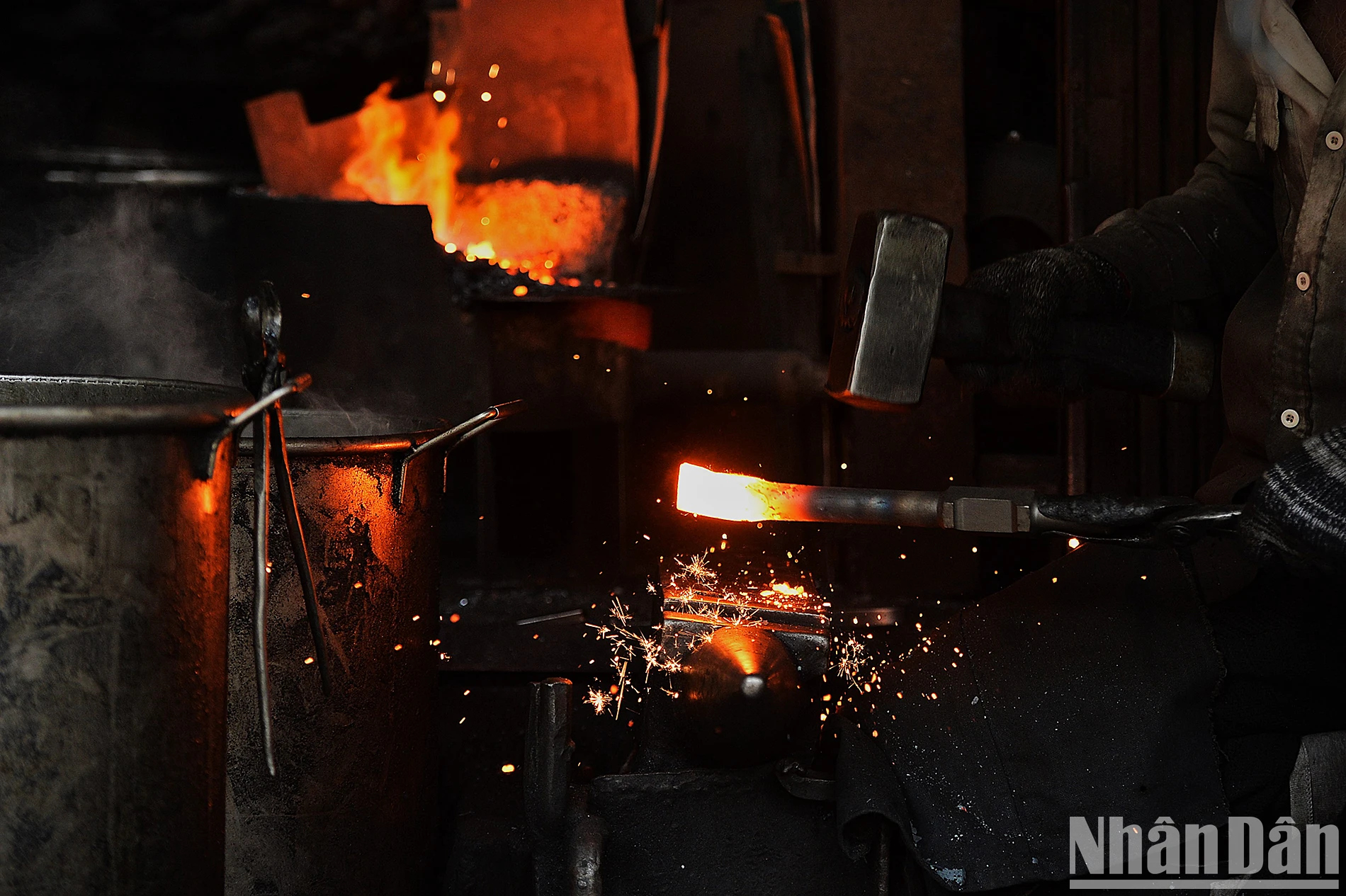 |
Each sharp sound of the hammer is a time when the product gradually takes on more shape and life.
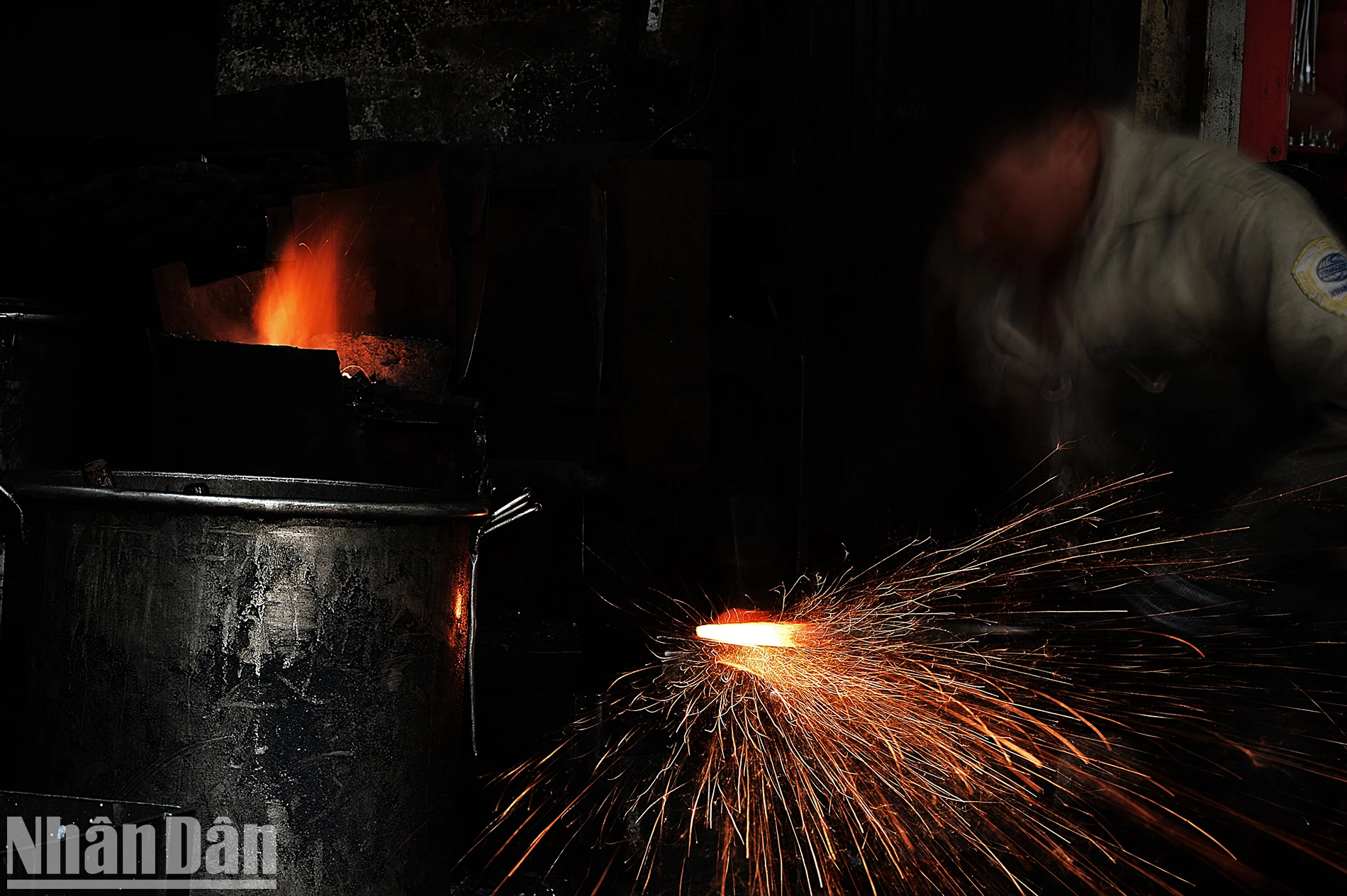 |
The red glow of the metal ingot through the talented hands of the 64-year-old craftsman.
Nearly 30 years have passed, the manual forges of the 36 streets have gradually cooled down. The artisans, many of whom are the third or fourth generation descendants of that "sweat-making" profession, have gradually put down their hammers or switched to welding, precision mechanics or selling construction materials.
However, in the middle of the old quarter that is increasingly bustling with modern life, Mr. Nguyen Phuong Hung's furnace is still burning in a space of only 2 square meters at the intersection of Lo Ren - Hang Dong (Hoan Kiem district, Hanoi).
"Many people think that blacksmithing is all about health. But in reality, it is not like that. This profession requires dexterity, meticulousness and a very high level of precision. Not only that, the blacksmith also needs to possess experience, sophistication, nimble hands and the ability to concentrate highly. It is not that people have not asked me to learn the profession. But after a while, they all gave up because they found manual blacksmithing too hard," shared the blacksmith born in 1960.
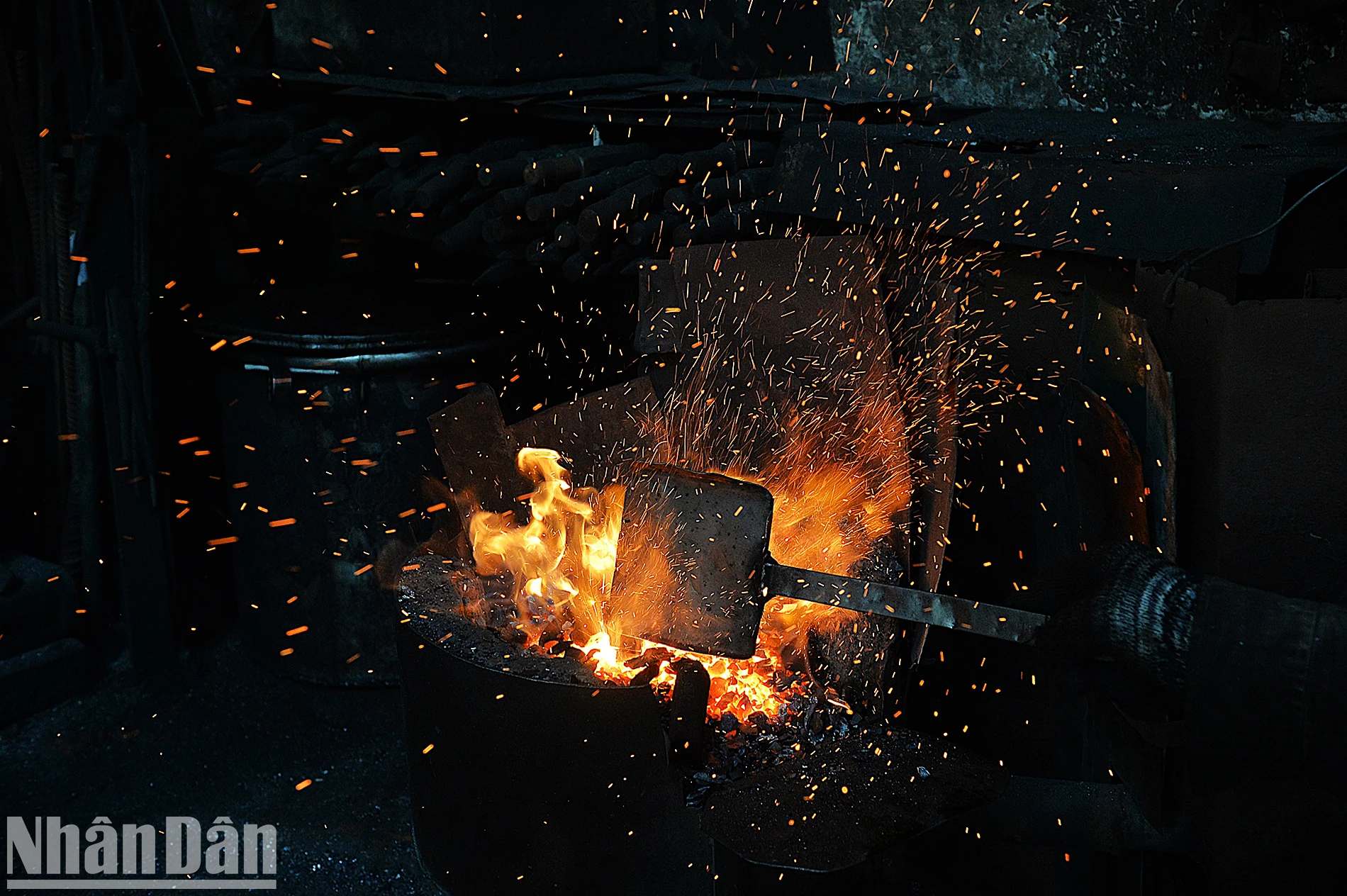 |
After each forging session, Mr. Hung adds more coal to the stove to heat it up.
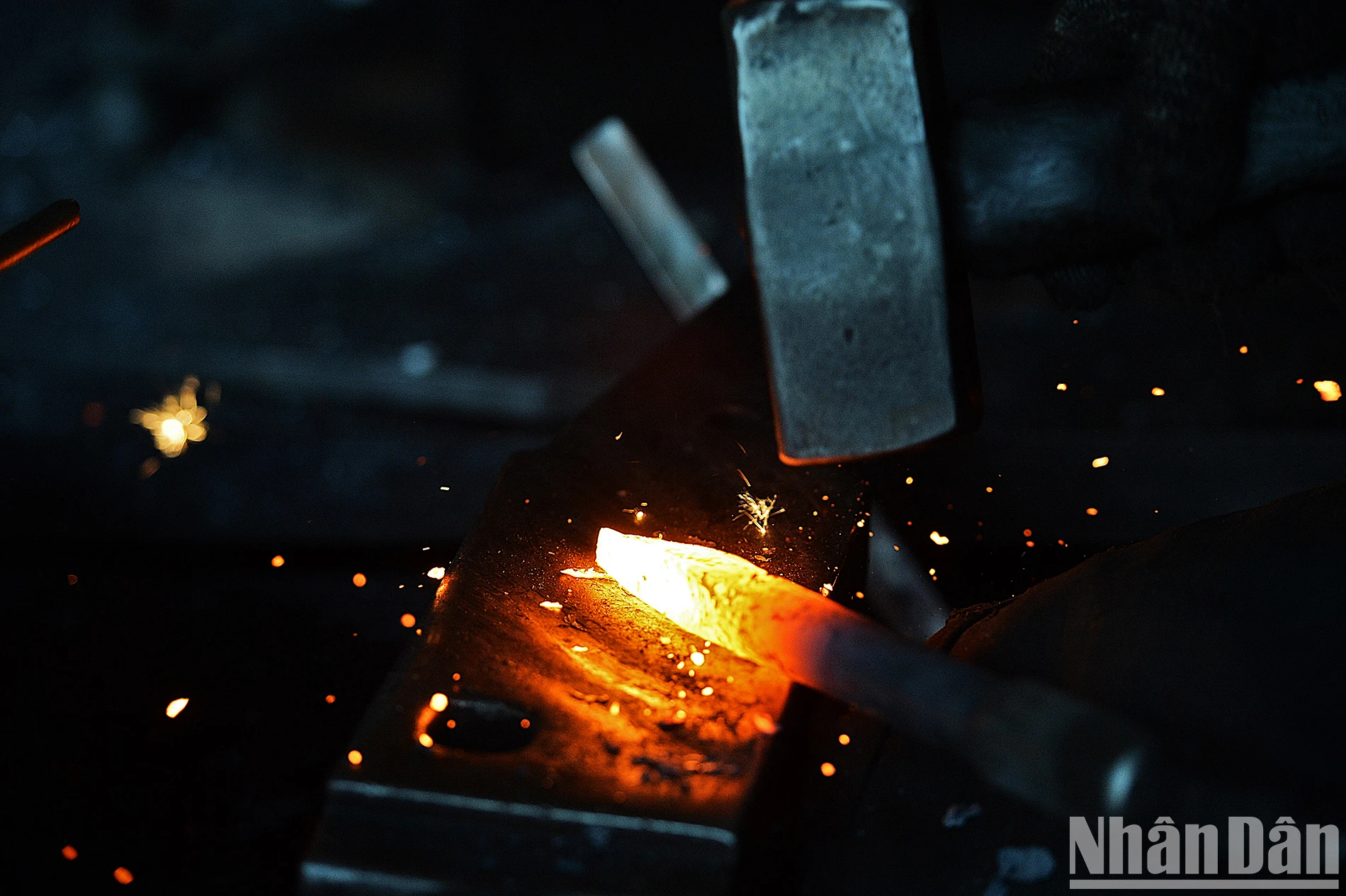 |
Drill bits and chisels become sharp as new with each hammer stroke.
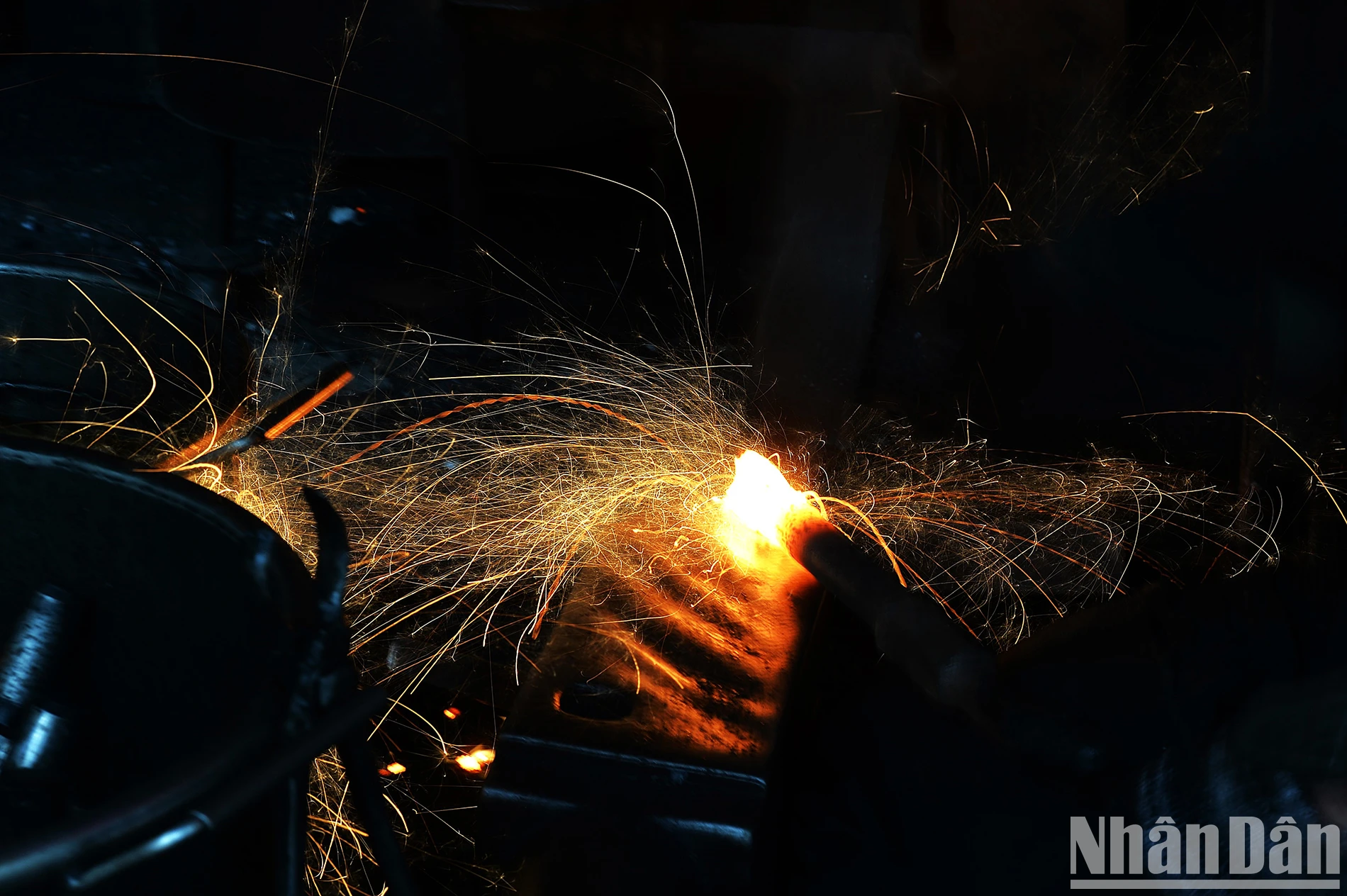 |
"Fireworks" in Mr. Hung's 2m2 wide blacksmith workshop.
Indeed, after many unsuccessful attempts to visit his " 2m2 territory", we have come to understand the meticulousness in each stage of blacksmithing. Once, he briefly explained that the temperature and humidity of the day were not suitable for lighting a fire, and the products made would certainly not be of the expected quality.
Mr. Hung has two children, a boy and a girl. However, his son is not healthy enough to take over his father's career. When mentioning the risk of the family business dying out, he felt a little sad and said in a low voice: "Nowadays, who doesn't want to be leisurely? No one sweats and tears over a thousand-degree hot stove to keep the business going."
Currently, Mr. "Hung the blacksmith" still receives orders from all over the world, most of which are repairing drill bits, chisels or making new crowbars, hoes, shovels... Since then, the traditional blacksmithing profession has brought the last artisan blacksmith of the 36 old streets of Hanoi an income of tens of millions of dong per month. However, how long will the fire of the forge on that street corner burn red, when that artisan is 64 years old this year?
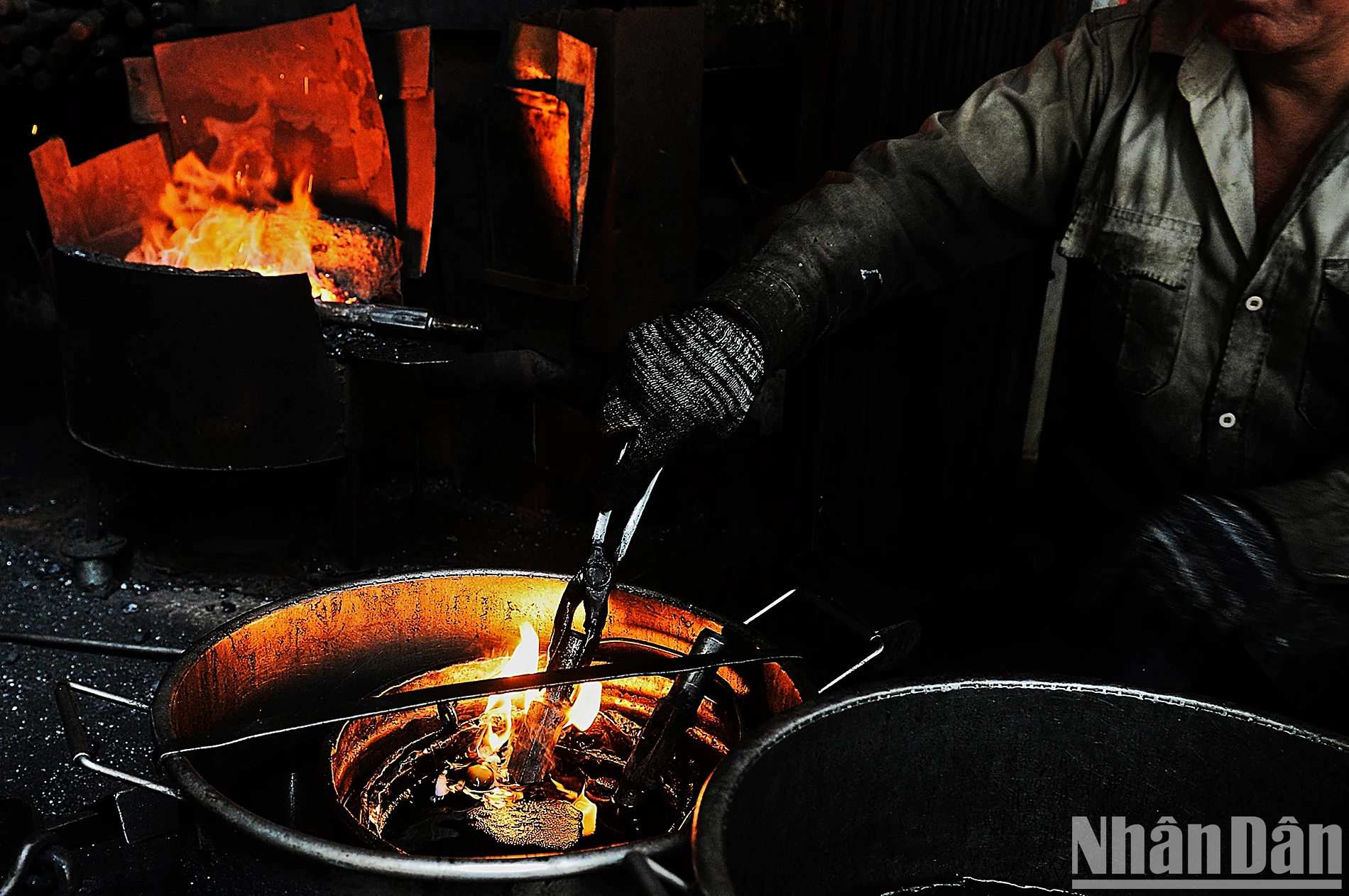 |
After the forging process, the product will be cooled through 3 steps.
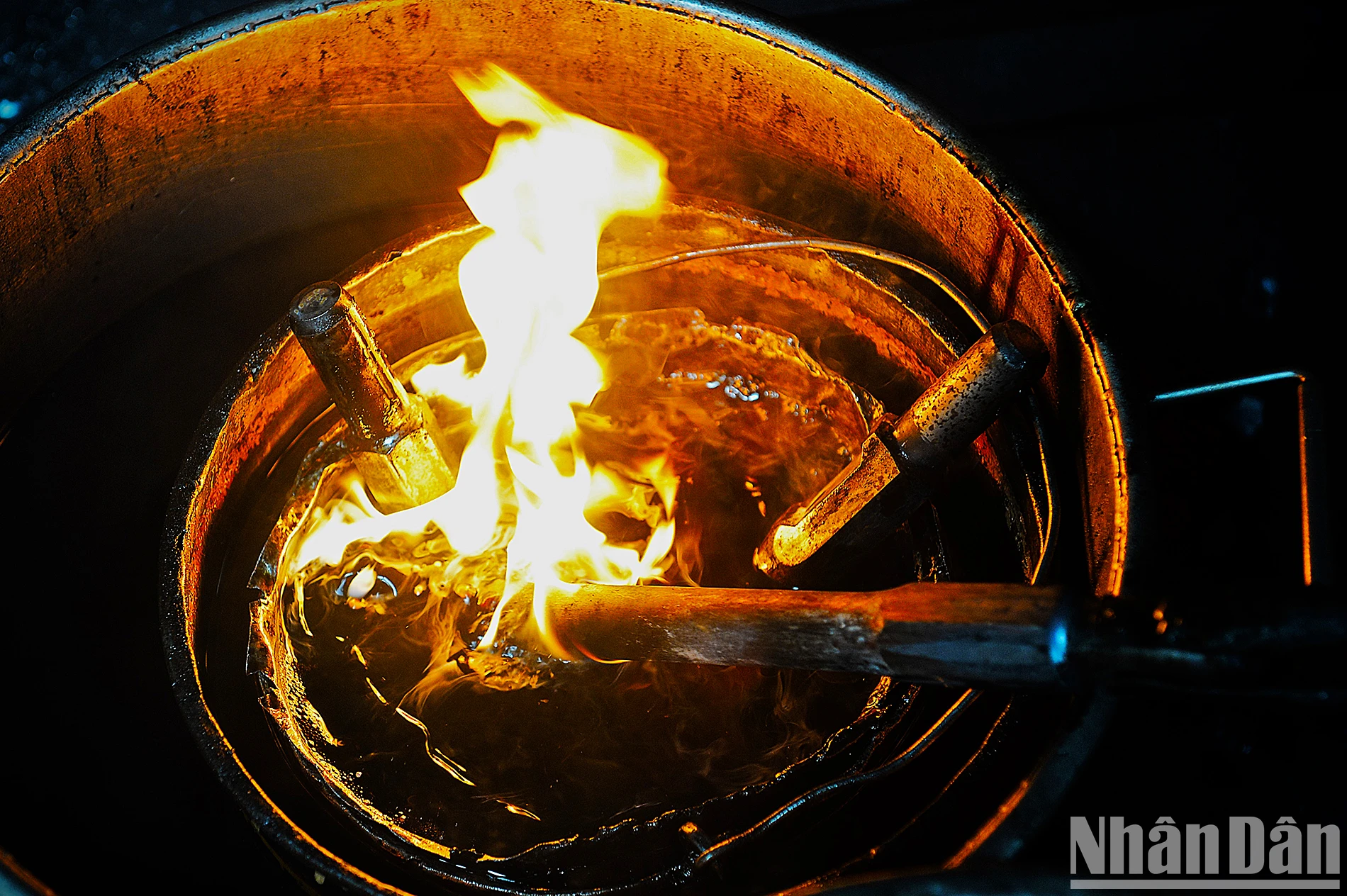 |
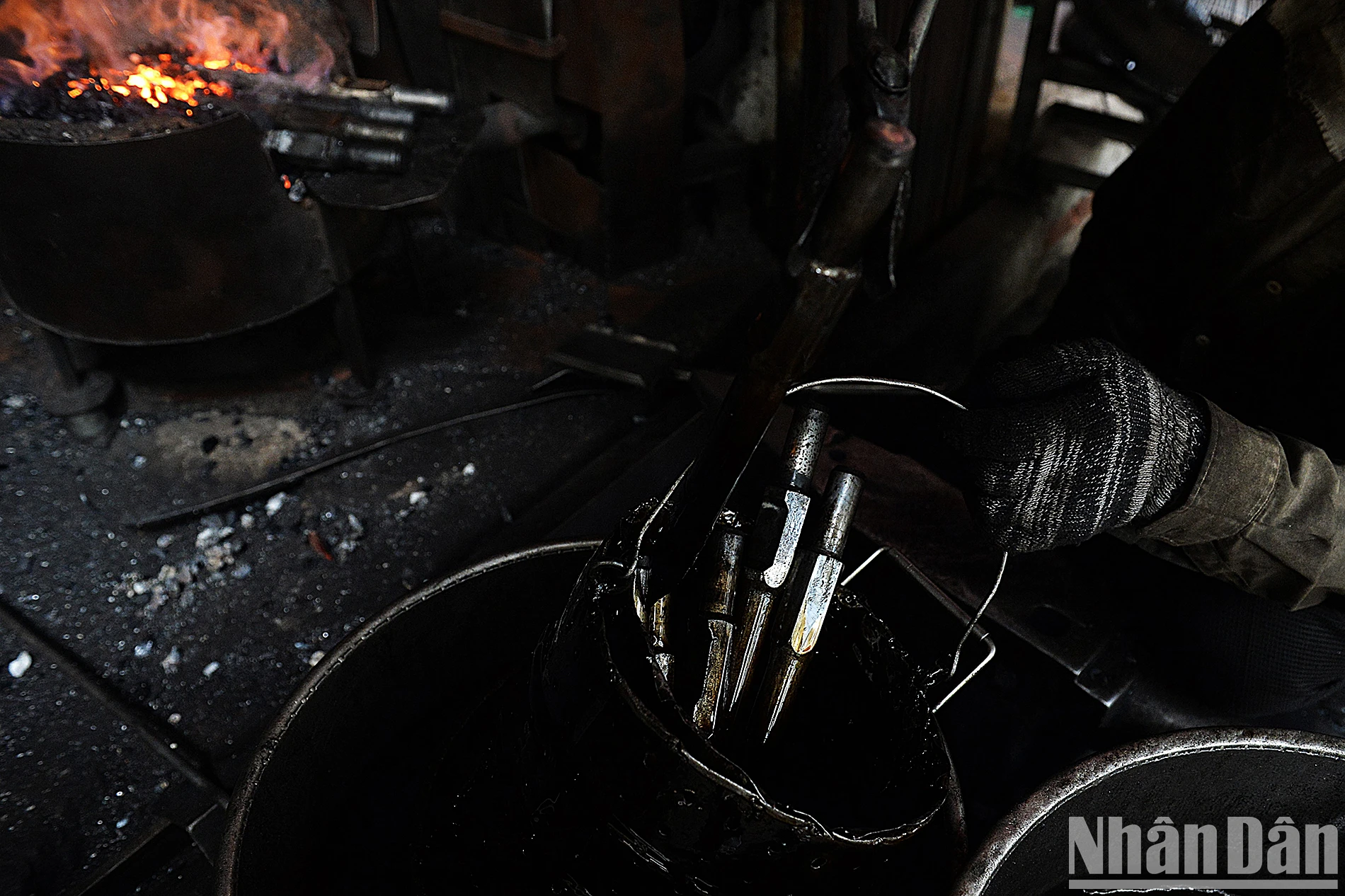 |
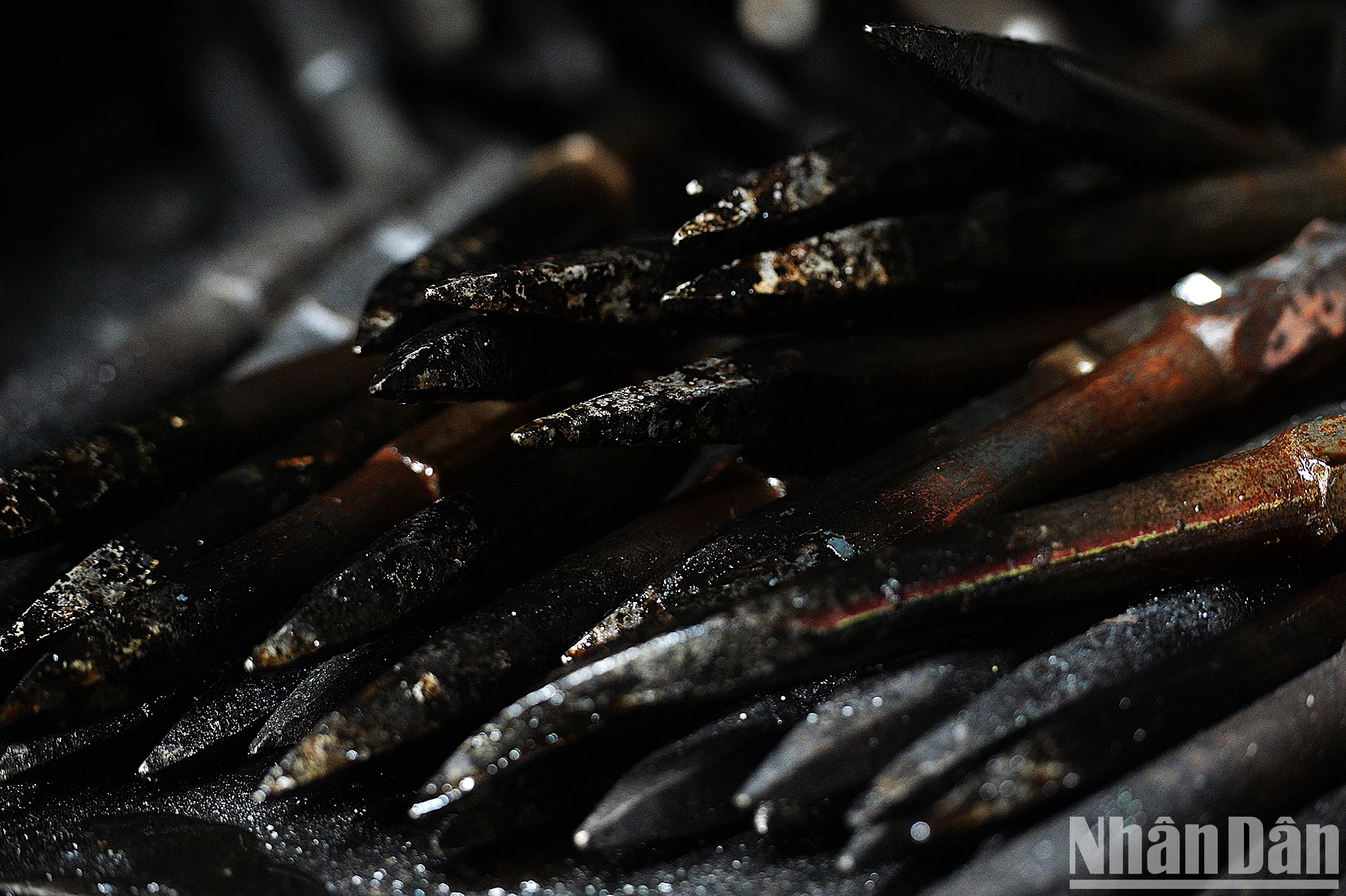 |
Nhandan.vn
Source: https://nhandan.vn/ngam-hoa-lua-tu-tay-nguoi-tho-ren-thu-cong-cua-pho-co-ha-noi-post828187.html


![[Photo] General Secretary To Lam attends the 8th Congress of the Central Public Security Party Committee](https://vphoto.vietnam.vn/thumb/1200x675/vietnam/resource/IMAGE/2025/10/4/79fadf490f674dc483794f2d955f6045)
![[Photo] Solemn opening of the 8th Congress of the Central Public Security Party Committee, term 2025-2030](https://vphoto.vietnam.vn/thumb/1200x675/vietnam/resource/IMAGE/2025/10/4/f3b00fb779f44979809441a4dac5c7df)


![[Photo] Bustling Mid-Autumn Festival at the Museum of Ethnology](https://vphoto.vietnam.vn/thumb/1200x675/vietnam/resource/IMAGE/2025/10/4/da8d5927734d4ca58e3eced14bc435a3)



![[Photo] Preserving traditional Mid-Autumn Festival in modern life](https://vphoto.vietnam.vn/thumb/402x226/vietnam/resource/IMAGE/2025/9/26/d4d4767169c646a2836dcee6bd34581a)

















































![[VIDEO] Summary of Petrovietnam's 50th Anniversary Ceremony](https://vphoto.vietnam.vn/thumb/402x226/vietnam/resource/IMAGE/2025/10/4/abe133bdb8114793a16d4fe3e5bd0f12)

![[VIDEO] GENERAL SECRETARY TO LAM AWARDS PETROVIETNAM 8 GOLDEN WORDS: "PIONEER - EXCELLENT - SUSTAINABLE - GLOBAL"](https://vphoto.vietnam.vn/thumb/402x226/vietnam/resource/IMAGE/2025/7/23/c2fdb48863e846cfa9fb8e6ea9cf44e7)





















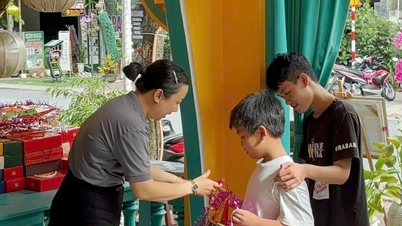












Comment (0)